| Richard I of England @Ancient History |
Natural offspring:
a. Fulk (?)
a. Fulk (?)
2) Philippe II Auguste de France.
"After this time Richard and Philip were great friends. Both of them were young and unmarried, and they had already been allies in waging war against Richard's father, Henry II. Their temperaments were different, however. Philip, blind in one eye, had no real love of fighting, being quieter and more of a diplomat than Richard. Richard, by everyone's accounts, was a man of superb physique, tall, incredibly handsome, strong, and talented in the arts of poetry and music as well as in the skills of battle. He had unbounded energy and a ferocious and violent temper. Normally he was generous, but his moods were unpredictable and he could be callous and cruel. Above all, he was a natural leader, and he adored the excitement of war. He had acquired his nickname, Coeur de Lion, or 'Lionheart' because of his bravery in combat." (Richard the Lionheart and the Third Crusade)
"...Richard wed Berengaria in 1191 on the island of Cyprus while en route to the Holy Land for a Crusade, and took her with him when he resumed his journey. However, it's not clear how long they remained together since they returned separately with Richard in the company of a lover, Raife de Clermont, a young knight whom he had rescued from captivity by the Saracens." (Neill: 345).
"Although Richard I spent the vast majority of his reign from 1189 t0 1199 outside England, either on a crusade or putting down rebellion in his French dominions, the crown none the less managed to retain much of the power Henry III had won. Rumours of an affair with Raife de Clermont, a young knight whom he had rescued from Saracen captivity, did nothing to tarnish the Lionheart's reputation as the epitome of medieval chivalry." (Carlton: 18)
4) Unknown woman.
Natural offspring:
a. Philippe, Lord of Cognac (d. after 1201)
Probably husband of Amelia of Cognac.
Edward I of England
|
(1239-1307)
King of England
1272-1307
Son of: Henry III of England & Eleonore de Provence.
Husband of:
"Eleanor was the beautiful dark-haired daughter of Ferdinand III, King of Castile and his second wife, Jeanne, Countess of Ponthieu. Eleanor was also descended from Henry II and Eleanor of Aquitaine, through their second daughter, Eleanor, who had married Alphonso VIII of Castile. Although their marriage was a political alliance the pair became deeply attached. She bore him sixteen children. The couple's first two sons, Henry and John died in infancy, their third son, Alphonso, the heir to the throne and Eleanor's favourite died at twelve years old, leaving their fourth son, Edward as his father's heir." (English Monarchs)
"Peace was so far established in 1265 as to warrant the return of Queen Eleanor, who took her daughter-in-law home with her. Prince Edward the ladies at Dover, and was delighted to welcome his wife, who had, during her absence, developed into a remarkably handsome woman. She had clear cut, delicate features, a fine figure, and a magnificent black hair, peculiar to Spanish ladies." (Agnes Strickland's Queens of England: 163)
2. Marguerite de France.
Edwards physical appearance & personal qualities.
"Edward I was a tall man of six feet two inches (1.88 metres), with long arms and legs from which his nick-name, Longshanks, was derived. His hair was black like his Provencal mother's, his complexion swarthy and his eyes fiery in anger. He inherited a drooping eyelid from his father Henry III, Edward spoke with a pronounced lisp, but possessed the fierce Plantagenet temper in full measure. The Song of Lewes in 1264 described him as a leopard, an animal regarded as particularly powerful and unpredictable. It was recorded of Edward that 'He was tall of stature, higher than ordinary men by head and shoulders, and thereof called Longshank; of swarthy complexion, strong of body, but lean; of a comely favour; his eyes in his anger sparkling like fire; the hair of his head dark and curled. concerning his conditions, as he was in war peaceful, so in peace he was warlike, delighting specially in that kind of hunting , which is to kill stags or other wild beasts with spears. In Incontinence of life he was equal to his father; in acts of valour, far beyond him. He had in him the two wisdoms, not often found in any single; both together seldom or never; an ability of judgement in himself, and a readiness to hear the judgement of others. He was not easily provoked into passion, but once in passion not easily appeased.'" (English Monarchs)
His lover was:
Alice de Lusignan, Countess of Glouceste (1236-1290)
"Edward I was a tall man of six feet two inches (1.88 metres), with long arms and legs from which his nick-name, Longshanks, was derived. His hair was black like his Provencal mother's, his complexion swarthy and his eyes fiery in anger. He inherited a drooping eyelid from his father Henry III, Edward spoke with a pronounced lisp, but possessed the fierce Plantagenet temper in full measure. The Song of Lewes in 1264 described him as a leopard, an animal regarded as particularly powerful and unpredictable. It was recorded of Edward that 'He was tall of stature, higher than ordinary men by head and shoulders, and thereof called Longshank; of swarthy complexion, strong of body, but lean; of a comely favour; his eyes in his anger sparkling like fire; the hair of his head dark and curled. concerning his conditions, as he was in war peaceful, so in peace he was warlike, delighting specially in that kind of hunting , which is to kill stags or other wild beasts with spears. In Incontinence of life he was equal to his father; in acts of valour, far beyond him. He had in him the two wisdoms, not often found in any single; both together seldom or never; an ability of judgement in himself, and a readiness to hear the judgement of others. He was not easily provoked into passion, but once in passion not easily appeased.'" (English Monarchs)
His lover was:
Alice de Lusignan, Countess of Glouceste (1236-1290)
Daughter of: Hugues XI de Lusignan, Comte de La Marche & Angouleme & Yolande de Dreux, Comtesse de Penthievre & Porhoet
Wife of: Gilbert de Clare, 6th Earl of Gloucester (1243-1295) mar 1253, div 1284.
"Alice was described as being very beautiful with dark hair and dark eyes. She was also flirtatious and provocative. She was said to strongly resemble her grandmother Queen Isabella. In the late summer of 1259, she formed a friendship with her half first cousin, Prince Edward who would later ascend the throne as King Edward I. When civil war broke out and the barons rose up against the King led by Simon de Montfort, Alice's husband supported them. Prince Edward, who headed the Royalist Army, quickly went to war against the traitors who had betrayed his father. Tonbridge Castle, one of Gloucester's properties was captured by Prince Edward's troops and Alice, who was resident in the castle at the time, taken prisoner. It is alleged that the Prince and his cousin became lovers while she was imprisoned. Edward's young wife, Eleanor of Castile was in France at the time. Alice was released shortly afterward." (Wikipedia)
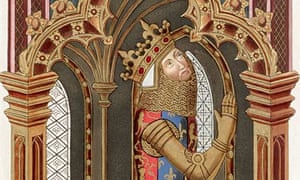 |
| A mid-13th century illustration of Edward III by Philip De Bay/Historical Picture Archive/Corbis @The Guardian |
Lover in 1363 or 1366.
English royal mistress.
Lady-in-waiting to Queen Philippa.
"A name given to Alice Perrers (or Pierce), a mistress of Edward III of England, and a married woman of great beauty, who had been lady of the bed-chamber to Queen Philippa. Although Edward lavished upon her both honors and riches, yet at his death she stole his jewels, taking even the rings from his fingers." (An Explanatory and Pronouncing Dictionary of the Noted Names of Fiction: 204)
Wife of: Sir William Windsor, Royal Lieutenant of Ireland
Natural Offspring:
1. Sir John de Southeray (1364-1383) mar Maud Percy, daughter of Henry Percy, 3rd Baron Percy & Mary of Lancaster.
2. Nicholas Lytlington, Abbot of Westminster
3. Jane Plantagenet mar Richard Northland
4. Joan Plantagenet mar Robert Skerne.
" . . . Called Dame Alice. Mistress to Edward III, king of England. She came to court as a ward of Queen Philippa and became Edward's mistress after Philippa's death. Like most royal favorites, she was despised at court. She was not of noble birth, which was also a cause of resentment. Alice exercised enormous influence over the king and was a good friend to Chaucer and to John of Gaunt. Eventually, she married Sir William Windsor, who had served the king's sons in the military, and continued as the king's mistress. Intelligent and clever, Alice was notorious for her manipulation of the king. An act of Parliament finally banished her from court in 1376, but she was brought back by the duke of Lancaster to keep the king occupied during his declining years as the nobles sought to gain power at the expense of the English Crown. Alice's life is an example of the few routes women had to gain power and influence. . . ." (Encyclopedia of Women in the Middle Ages: 15)
Edward's most notorious mistress.
" . . . His most notorious mistress was Alice Perrers, Queen Philippa's chief lady-in-waiting. She was the mother of at least four of Edward III's bastards. After Queen Philippa died, Alice took on royal airs, and used power over members of Parliament to enrich her own purse. . . ." (Lives of England's Reigning and Consort Queens: 156)
From the queen's lady-in-waiting to the king's bedmate.
"Another lady-in-waiting to the queen who made her way to the king's bed was Alice Perrers, mistress of Edward III of England, who served in the household of Edward's queen, Philippa of Hainaut, and was a young widow at the time their sexual relations began. She had a son and two daughters by the king, was publicly acknowledged after Philippa's death in 1369 and was notorious for accumulating lands and wealth. This made her vulnerable when the king was no longer there to protect her, and soon after his death in 1377 Alice was tried, condemned and deprived of all her lands. She spent the rest of her life -- more than twenty years -- trying to recover what she could. Unlike most royal mistresses of the period, she was not from a noble or knightly background but from a family of London goldsmiths and jewellers, who provided her first link with the royal court. . . ." (Blood Royal: Dynastic Politics in Medieval Europe: 164)
Personal and family background.
Personal and family background.
"Alice Perrers was the daughter of a Hertfordshire knight, but her surname Perrers may have come from a first husband. She was also known by the name Alice de Windsor for a second husband named William de Windsor. Both of her marriages came before she was lady-in-waiting to Queen Philippa. She became the mistress of King Edward III around 1369. Edward recognized four of her children as his own... She is reputed to have used bribes, and personal influence to force financially favorable legal decisions for herself and her favorites... She died in 1400, but lives on as England';s most egregiously calculating ambitious scheming and greedy woman of disrepute." (Lives of England's Reigning and Consort Queens: 156)
First encounter.
" . . .Alice Perrers' affair with Edward is usually said to have begun around 1364. If John was born in late 1364 or 1365, he would have been seventeen at the time he led the mutiny. This is not impossible: boys became men quickly in the Middle Ages, and perhaps his behaviour in 1382 smacks of youthful impetuosity. Yet it would be difficult to imagine that he was much younger then seventeen. Thus we know of John's career suggests that Alice became the king's mistress not later than 1364, and possibly earlier. . . ." (Given-Wilson and Curteis: 141)
Affair's benefits to the mistress.
" . . . Edward gave her the manor of Wendover, many of his late wife's jewels, and an annuity worth 100 pounds. So rich did Alice become that in 1375 she was able to lend Walter FitzWalter 1,000 pounds secured on Egremont Castle. . . ." (Carlton: 23).
A manor, an annuity & the dead queen's jewels.
" . . . Alice Perrers, for example, was quite well compensated for her lost virtue when she became the mistress of King Edward III of England. Among other gifts, she received the manor of Wendover, a large annuity, and many of the late queen's jewels from her royal lover. Alice became so wealthy that she could afford to lend a thousand pounds to Lord FitzWalter in 1375---a wise investment since she subsequently collected his castle of Egremont when he was unable to repay her." (Williams & Echols: 90)
References:
[Bio2:History & Women]
[Bio2: Luminarium]
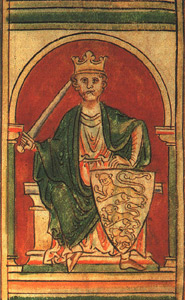

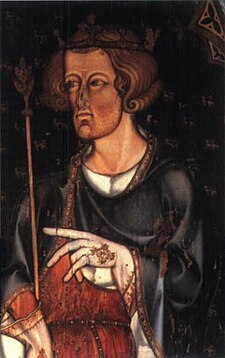
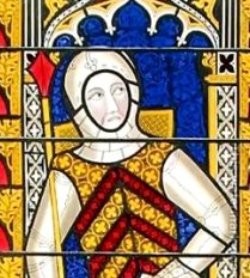
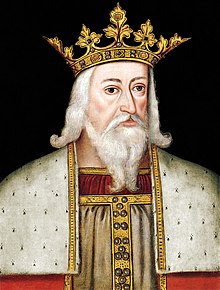
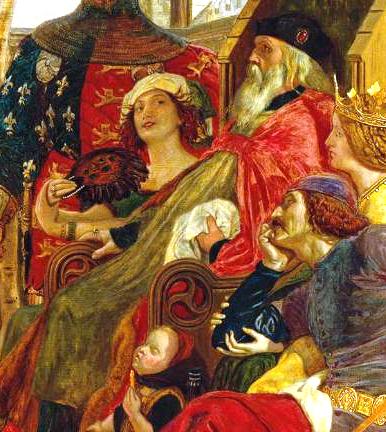
No comments:
Post a Comment